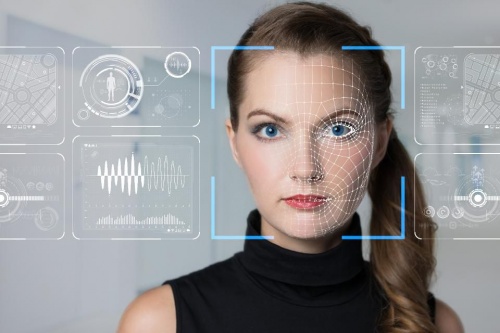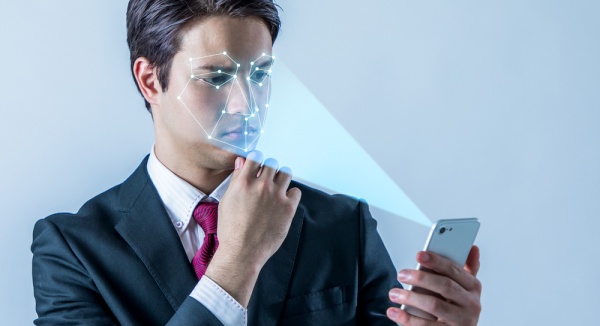Difference between revisions of "Face recognition"
| Line 12: | Line 12: | ||
===3D recognition systems=== | ===3D recognition systems=== | ||
| − | As the technology of face recognition is gaining popularity, there are many new features and capabilities improving these recognition systems. One particular feature was developed by the Bronstein brothers. Michael and Alexander Bronstein are electrical engineering graduate students and identical twins. As identical twins, they were always being mistaken for one another. This raised a serious security concern because facial recognition software could not tell them apart, so their information was not safe. They created new facial recognition feature which utilizes 3D technology.<ref> | + | As the technology of face recognition is gaining popularity, there are many new features and capabilities improving these recognition systems. One particular feature was developed by the Bronstein brothers. Michael and Alexander Bronstein are electrical engineering graduate students and identical twins. As identical twins, they were always being mistaken for one another. This raised a serious security concern because facial recognition software could not tell them apart, so their information was not safe. They created new facial recognition feature which utilizes 3D technology.<ref>Bronstein, Alexander, et al. “Three Dimensional Face Recognition.” Numerical Geometry of Non-Rigid Shapes Monographs in Computer Science, 2008, pp. 261–275., doi:10.1007/978-0-387-73301-2_13.</ref> This feature enhances previous sytems because instead of treated a face like an image, it maps specific features to the face. Additionally, this feature is resistant to the effects of lighting and make up on the ability to recognize faces. |
| − | + | ||
===Major Uses=== | ===Major Uses=== | ||
Revision as of 18:57, 9 April 2018
Face Recognition is a technology that allows a computer to identify a person by their facial features. It utilizes biometrics to identify an individuals inherent features [1]. Then, an algorithm is used to process these facial features and other factors such as lighting. This data is cross-referenced with a database of faces to identify each individual. Companies like Snapchat, Apple, and Amazon have adopted the use of facial recognition in order to augment users' experiences.
Contents
Progress
In recent years, the facial recognition technology has improved significantly. It is being used equally in many different fields, most notably security. Recent developments have even made systems that can recognize differences in identical twins. The 2002 Face Recognition Vendor Test shows that the technology of face recognition capabilities is increasing rapidly. The rate of error in facial recognition has gone down 50%[2] according to this test.
FRVT 2002
The Face Recognition Vendor Test of 2002 is a test that inspected the accuracy of facial recognition and explored areas for future development. The FRVT 2002 tested each face recognition system on its ability to identify correctly, verify the right individual, and "watch-list screening." What-list-screening is the process of facial recognition software drawing a conclusion is the particular individual being analyzed is in the database of faces, and if so who that individual is. The test resulted in a 85% identification rate, 96% verification rate, and a 77% detection rate for the top few facial recognition systems.[3]
3D recognition systems
As the technology of face recognition is gaining popularity, there are many new features and capabilities improving these recognition systems. One particular feature was developed by the Bronstein brothers. Michael and Alexander Bronstein are electrical engineering graduate students and identical twins. As identical twins, they were always being mistaken for one another. This raised a serious security concern because facial recognition software could not tell them apart, so their information was not safe. They created new facial recognition feature which utilizes 3D technology.[4] This feature enhances previous sytems because instead of treated a face like an image, it maps specific features to the face. Additionally, this feature is resistant to the effects of lighting and make up on the ability to recognize faces.
Major Uses
Facial recognition has proven to be a very useful technology. Being able to access an individual's face has changed the way many industries do business and how many institutions handle everyday security concerns.
- Facebook
- The most prominent form of face recognition that people see is on social media. A research group at Facebook developed DeepFace, a facial recognition algorithm using machine learning, to identify faces 97% accuracy.[5] Facebook has implemented this software to automatically tag a user's friend in their photos using face recognition software. [6]
- Snapchat
- Snapchat uses facial recognition in order to allow users to add filters to their Snapchat photos. The app recognizes a face, and then users can add a dog filter, flower crown or glasses to their photo.
- Dating
- Some dating websites also use facial recognition technology to match people based on facial feature preferences. [6]
- Crime
- Law enforcement can use face detection to track down criminals, improving the crime rate. [6] The US Department of State manages a facial recognition database with over 117 million Americans that the FBI uses to aid investigative efforts. The database contains mostly photos from state-issued licenses and IDs. [7]
- IPhone X
- A prominent example of facial recognition today is integrated into the new iPhone X. The iPhone X uses Face Id, a technology that detects a user's face when looking at the phone and unlocking the device if the face matches up to what the user initially set as the correct face. While scanning one's face, the iPhone uses infrared and visible light scans to identify one's face. By using this biometric authentication, the security measures are uniquely designed for the iPhone owner. This feature on the iPhone x relies on many unique facial features such as lighting conditions and accessories to enhance the user experience. The user must look at the phone attentively in order for the facial recognition technology to work. Apple claims that their Face Id technology is secure that there is a 1 in a 1,000,000 chances that another face will match as another user. [8]
Types of Facial Recognition
There are many different way that Facial Recognition has made itself a prominent and rising technology in our society.
Benefits
- Increased Security - Facial recognition is mostly used for security purposes. Most business have adapted this technology to add more security to their confidential data and files. [9]
- Business - Facial recognition is also be used in marketing. The software can determine attributes such as gender, age, and ethnicity. Retailers use this information for targeted advertising.[9]
- Airport Security - In the near future, airports may be adding facial recognition to their security systems. This would streamline the security process at airports, making travel more efficient and safe.[9]
Controversy
As facial recognition technology has improved, more users have developed opinions on the nature of the technology.
Security Concerns
While facial recognition technology aids security measures. many individuals fear that it is an invasion of privacy. People fear false positives, meaning the facial recognition system could wrongly identify an individual. This would have many repercussions including: allowing them access to someone else's private information and/or falsely accuse someone of a crime they did not commit.
Identity Concerns
There are a plethora of issues related to what a person should look like and how the biases of programmers who create the IA for these technologies can be included in facial recognition software. Many individuals have plural selves or multiple identities.[10] Yet, facial recognition software only allows for one identity to be recognized and allowed access to the information it is protecting. For people who have multiple identities, they will only have access to certain information, regarding themselves, when they choose to identify a certain way. This raises many ethical dilemmas about who has the right to this information and why only certain individual's identities should be allowed to access their protected information.
Power Concerns
The abuse of power with this new technology is a large ethical concern. For example, a parent or spouse could track their child or significant other without their knowledge. This again addresses the issue of privacy invasion.[11] A parent may also program their facial recognition into their child's phone without them knowing, allowing the parent to have unauthorized complete access to all information on the device.
References
- ↑ “Biometrics Expert Delivers Lecture on Facial Recognition.” RAND Corporation, www.rand.org/natsec_area/products/facialrecog.html.
- ↑ D. Voth, "Face recognition technology,"IEEE Intelligent Systems, vol. 18, no. 3, pp. 4-7, May-Jun 2003.
- ↑ Flanagan, Patricia A. “Face Recognition Vendor Test (FRVT) 2002.” NIST, 25 Aug. 2016, www.nist.gov/itl/iad/image-group/face-recognition-vendor-test-frvt-2002.
- ↑ Bronstein, Alexander, et al. “Three Dimensional Face Recognition.” Numerical Geometry of Non-Rigid Shapes Monographs in Computer Science, 2008, pp. 261–275., doi:10.1007/978-0-387-73301-2_13.
- ↑ Russell Brandom (July 7, 2014), "Why Facebook is beating the FBI at facial recognition", The Verge
- ↑ 6.0 6.1 6.2 https://www.techguruit.com/top-8-ways-facial-recognition-software-used-today/
- ↑ FOTUNE. "Here's How Many Adult Faces Are Scanned From Facial Recognition Databases"
- ↑ https://www.macworld.com/article/3225406/iphone-ipad/face-id-iphone-x-faq.html
- ↑ 9.0 9.1 9.2 https://www.kairos.com/blog/face-recognition-and-the-future-of-security
- ↑ Cocking, Dean. (2008). “Plural Selves and Relational Identity: Intimacy and Privacy Online,” in Information Technology and Moral Philosophy, edited by Jeroen Van Den Hoven and John Weckert. Cambridge University Press, pp. 123-41.
- ↑ K.W. Bower. "Face recognition technology: security versus privacy" IEEE Technology and Society Magazine, vol. 23, no. 1, pp. 9-19, Spring 2004

